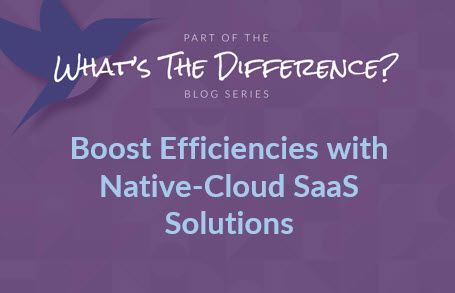Avoiding Front-End Denials: The Vital Role of Claim Scrubbing
Many practitioners like to joke that insurance payers are more often in the business of denying claims than paying them… and from my point of view, they have a point. To maintain a stable stream of payments, you need a reliable system to help double, and triple check your work.
Accuracy in claims processing is paramount in the complex realm of Durable Medical Equipment (DME) and Orthotics & Prosthetics (O&P). It’s not news to anyone in the industry that claim scrubbing is a pivotal process that ensures claims are not only accurate but also processed efficiently, benefiting both providers and patients alike. But why is it so hard to get claim scrubbing right? I’m going to delve into the significance of this important step for DME and O&P providers, and what we can do to get claims right the first time.
To make sure we’re all talking about the same processes, it may be best to start off with a shared definition & goal.
Claim Scrubbing is the process of reviewing healthcare claims to ensure their accuracy and completeness before submission to insurance payers. This involves running the claims through various checks and edits to identify and rectify errors, inconsistencies, or missing information.
While there are many best practices for claims scrubbing, I’m going to focus on how to work claims on the front-end, before the initial claim is submitted to payers. I’ll also throw in some general best practices & tips for each strategy.
Strategies to Minimize Front-End Denials
Minimizing front-end denials is essential to optimizing revenue cycle management and ensuring timely reimbursement for your business. Front-end denials occur when claims are rejected by clearinghouses at the initial submission stage before they are sent through to insurance payers due to a variety of reasons, including:
- Missing or incorrect patient demographic information.
- Inaccurate or incomplete coding.
- Lack of prior authorization.
- Billing for non-covered services or procedures.
- Incorrect insurance information.
- Failure to meet payer-specific formatting or submission requirements.
Success is all about your ability to be accurate, compliant, and efficient. But that’s enough of the high-level talk – let’s get to the actionable insights. Here are five strategies to mitigate front-end claim rejections:
1. Comprehensive Patient Intake
If your business management or claims management software isn’t efficient or accurate about receiving patient information, it will slow your team (and your claims processing time) significantly. Consider finding business management software that offers AI/OCR integrations to “read” PDF prescriptions and orders into your claims management platform. It will reduce errors and save your team so much time. If that’s out of budget, consider making checklists as a team for areas with common mistakes in patient information, or try these tips to help.
2. Leveraging Technology
There’s no doubt about it – claims management is not moving back to paper. It’s time to invest in a solid software solution that can track status, productivity, and submit your claims electronically. Bonus points if the software includes other automations & reporting dashboards.
- Best Practice Tip – Utilize robust claim scrubbing software or services that offer comprehensive checks and edits tailored to DME and O&P billing. Not sure which HCPCS to use? Consider finding software that will check if two HCPCS are compatible, or even recommend a code based on the notes in your order or prescription.
3. Staff Training
Is your team on the same page? Do you have dedicated time to learn as a team about changes in regulations or rules for payers? Consider having monthly or quarterly meetings to train and get on the same page. Take time to regularly engage in educational webinars as a team – there are many options hosted by Medicare, trade associations like AOPA or OPGA, or consulting firms like O&P Insight. Comaraderie can be a good motivator, especially if the team really feels like a team: encouraging each other to do their best!
- Best Practice Tip – Establish clear protocols and workflows for claim review, including regular audits to identify and address any recurring issues. Nymbl doesn’t only bring a great amount of financial visibility to your business through canned and customizable reporting dashboards. We also give you visibility into your productivity to monitor orders and claims.
- Best Practice Tip – Provide staff with adequate training on claim scrubbing processes and coding guidelines to enhance accuracy and efficiency. While it’s great to have specialized experts for specific insurance payers, cross training your team can put you at an advantage if a team member leaves for a period, or if you someone to “cover” while you search for a new hire. Regular training will also make sure your team stays up-to-speed and sharp on regulations or more abstract, uncommon scenarios in claims.
4. Regular Audits
If you don’t have a solution to help with internal audits, there’s no time like the present. You don’t want to wait until things escalate into fines or legal action. Self-auditing by reviewing claims, verifying documentation, applying codes accurately, verifying billing and regulatory compliance, and having a set plan for error corrections will help you mitigate risk in these areas. Feeling the crunch for time? Using the right business management platform can help you stay prepared by documenting, storing, and reporting on historical documents with little effort. Or, you can get in touch with a consulting firm to help you get organized.
5. Staying Updated on Payer Policies
When your team has allocated responsibilities to stay on top of certain payer requirements, it’s much easier to divide and conquer. Consider having your team work in pods that specialize in certain payers' policies. While not everyone on your team needs to be an expert about every payer, it’s helpful to supply resources for them, like access to webinars hosted by payers. Don’t forget about the quarterly updated schedule of HCPCS codes!
- Best Practice Tip – Stay updated on regulatory changes and payer policies to ensure compliance and adapt claim scrubbing processes accordingly. It’s your business’s responsibility to make sure that you’re following the regulations for each payer & keeping an updated list of HCPCS each quarter. Consider diversifying your billing and claims team to have an expert on each insurance payer in your network.
By implementing effective claim scrubbing practices, providers can streamline their revenue cycle, optimize reimbursements, and ultimately deliver better care to patients. In today's evolving healthcare landscape, investing in robust claim scrubbing solutions is essential for success in the DME and O&P industry. It’s time to check out the difference Nymbl Systems offers your billing and claims teams!











